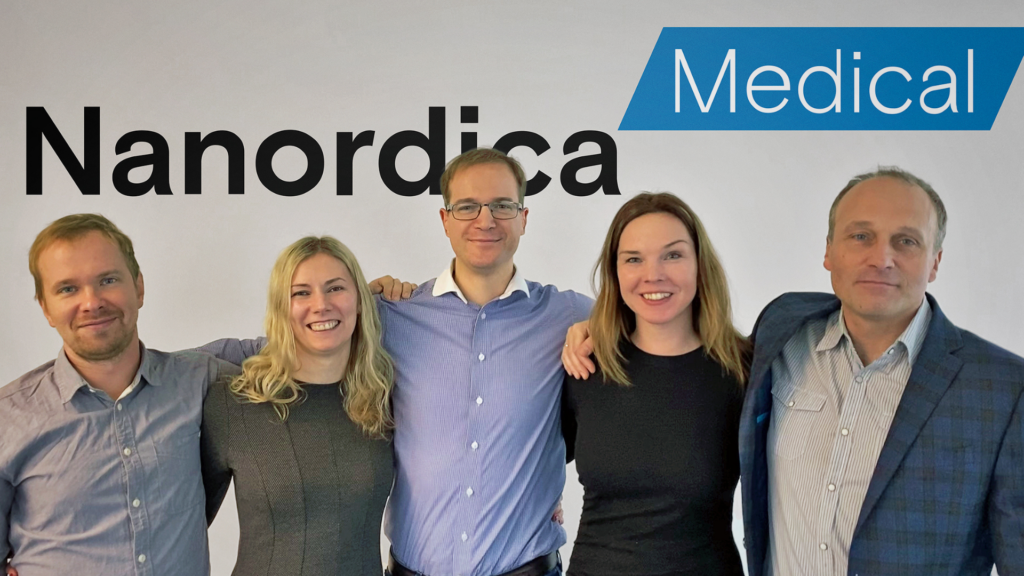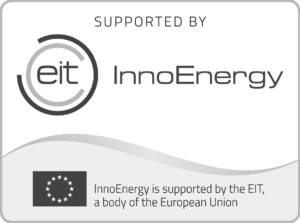13.02.2023
Antibacterial nanotechnology developed by Estonian health start-up Nanordica Medical attracts investor interest

Nanordica Medical, member of the Connected Health Cluster led by Tehnopol, had an extremely successful year in 2022. This year, they will press forward with product development while putting increased emphasis on business development.
We spoke to Olesja Bondarenko, one of the founders and CEO of Nanordica Medical, about last year and the year ahead.
Nanordica Medical enjoyed great success last year. You raised money and successfully participated in the sTARTUp Day pitching competition. Which accomplishments from last year are you happiest with?
For the company, launching clinical trials of the product we are developing in collaboration with the North Estonia Medical Centre is the most important thing. That required a great deal of preparation and was a hugely important step for us. The results we are already seeing are very encouraging indeed. As of today, we have analysed the results of a third of the patients and in most cases it is evident that patients benefit a great deal from our wound dressing. That is our goal and what matters most.
We also had a very good year in terms of fundraising. Our biggest funding came through the EIC Accelerator – we secured €2.4 million from the European Commission. This was a huge milestone considering that very few are awarded this funding. Only the most innovative companies with the highest growth potential are selected. We passed a number of evaluation rounds, reassuring us that our technology, approach and business model are all in place.
The third great thing from last year was when we won the sTARTUp Day pitching competition and received a €150,000 investment from the Estonian Business Angels Network (EstBAN) syndicate, led by Heidi Kakko and Martin Goroško. Our entire team was of course very happy.
Has the development and growth of the company proceeded as planned so far? Have there been any major surprises?
I have written on social media about how it’s impossible to predict success. We have worked very hard for three years and it’s finally starting to pay off. Sure, we had our goals, but we had no way of knowing when it might happen. In some way, everything has progressed as expected – some things succeed while others take time. For example, last year we submitted ten applications to receive grants, but none of them came to fruition. Much of it is just accidental and cannot be planned in advance.
What does your company see as the greatest strengths of health ecosystems in Estonia? Where have you found support?
Estonia’s strength is obviously the IT side, even though there is still a lot to be done. When we started four years ago, there were few opportunities to develop a medtech start-up in Estonia. But now they are slowly emerging and the ecosystem is starting to develop. The Connected Health cluster led by Tehnopol and the Health Founders Accelerator have been of great help to us. Our lead investors are also affiliated with Tehnopol and Health Founders. We have received a lot of support in Estonia, but my next hope is to find a foreign investor with a medtech focus. That would really help us get our foot in the door in a number of places.
Is Nanordica Medical targeting any foreign markets and if so, which ones?
As for foreign markets, we are eyeing European markets for now; afterwards, we plan to target the US and India. Our current focus is on Germany, Spain and the UK. They all have pros and cons. The Estonian market is tiny by our standards, but it is a good place to test our product. And Estonian doctors have been very cooperative.
What are your plans for 2023? What does the year hold for Nanordica?
In previous years, we focused more on science and product development, but now it has shifted to business development. We also have a new Business Development Manager and Co-founder Meelis Kadaja. He has a lot of experience in this field, and I for one am very glad for it. We will of course continue with product development and clinical trials. One major objective for next year is to prepare a large-scale new clinical trial in target markets.
We recently closed a successful fundraising round for 375,000 euros led by investors Heidi Kakko, Martin Goroško and Erki Mölder, including angel investors from Estonia, Germany, Finland, Belgium and Switzerland.
Could Estonia’s next unicorn be in medicine? Which companies harbour this potential?
Let’s just say we will do everything in our power to make Nanordica Medical the next unicorn. What is very positive is that we are starting to build an ecosystem of medtech start-ups. After all, unicorns don’t just appear out of nowhere. It is much easier if you have a solid foundation. It seems to me that we are close to reaching that critical mass, and although it will probably take a number of years, I believe that we are moving in the right direction. For one thing, there is a lot of support for research-based companies. It is also recognised that medtech start-ups are here to solve important problems. Investors are starting to realise that this is where the future is headed. So, I believe we are on the path to a medtech unicorn in Estonia in about 5-7 years’ time.
Nanordica Medical is a spin-off of the National Institute of Chemical Physics and Biophysics that invented and patented an innovative antibacterial nanotechnology. You can follow the company on LinkedIn and their website.












